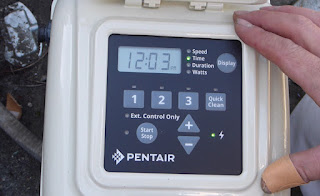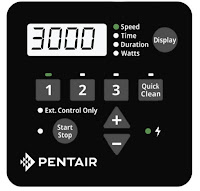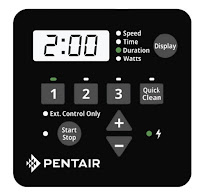The Polaris TR36P is the latest
Pressure Side (Return Side) cleaner on the market and it is an
excellent automatic cleaner. The TR36P is sold only at your local
brick and mortar pool store not sold online. It is part of
Zodiac/Polaris Trade Series Exclusive Line-Up.
The Polaris TR36P does not require a
dedicated return line connected to a separate booster pump. It works
off of your existing pool pump and easily connects to your pools 1
1/2” threaded return lines. It does not connect to your pool's
skimmer or side port like a traditional suction side cleaner.
This feature makes the TR36P unique
among Pressure Side cleaners. It also makes the TR36P ideal for a
pool that is already constructed and a separate booster pump cannot
be added. The nice thing about the cleaner is that while it is
running in your pool the skimmer will be fully operational with
complete suction. The TR36P works off of the return line of the
pool.
The TR36P comes is a very nice dark
color scheme. The hoses are black and the cleaner sports black wheels
with a dark blue body. It is just an overall sweet looking cleaner.
And not only does it look good but it picks up leaves, dirt and
debris exceptionally well. You can see it in action in the video.
The cleaner is powered by 3-venturi
jets that funnel the pool's return water making a powerful spray like
a garden hose nozzle and pushing the debris into the large debris bag
on top of the cleaner. It is a highly effective design and the same
one that is used on the Polaris 360. It comes with an extra debris
bag in the box as an added bonus which is just perfect.
 It also comes equipped with the Tail
Sweep Pro which does not come standard on any of their cleaners
except the Polaris 3900 Sport. The Tail Sweep Pro will allow for full
water flow to the tail but it is designed to prevent water from
shooting out of the pool and onto the deck and your backyard windows. It is another nice touch by Polaris.
It also comes equipped with the Tail
Sweep Pro which does not come standard on any of their cleaners
except the Polaris 3900 Sport. The Tail Sweep Pro will allow for full
water flow to the tail but it is designed to prevent water from
shooting out of the pool and onto the deck and your backyard windows. It is another nice touch by Polaris.
If your pool has 1 1/2” threaded
return lines and you get a lot of debris on the bottom of the pool,
the TR36P would be ideal. I prefer installing the return side
cleaners in pools that get large leaf debris as the traditional
suction side cleaners usually get clogged up with debris. The large
debris open will allow for piles of leaves to be pushed up into the
cleaner without clogging it up.
The large debris bag on top holds a
surprising amount of debris and it also traps sand and dirt very
well. I don't know the exact micron level of the bag but it does a
great job with sand and dirt as well as leaves. The bags are also
very long lasting and very easy to empty.
The cleaner itself is designed to last
for many years and replacing parts is very easy. I would say you will
get a good 3-4 years out of it running 6 hours a day, seven days a
week before you will need to replace some parts. It is extremely well
made.
 Also since no separate booster pump is
required, you will save on your energy cost. The TR36P will run while
your pool pump is running. It is also one less future expense as you
will not need to replace the booster pump motor after a few years.
Also since no separate booster pump is
required, you will save on your energy cost. The TR36P will run while
your pool pump is running. It is also one less future expense as you
will not need to replace the booster pump motor after a few years.
The Polaris TR36P is a Top Pick for
2017 and you will love how it leaves your pool spotless every week.
This is a great addition to the Polaris cleaner family so stop by
your local pool store and check it out.


















